MARIANI’S
July
15, 2007
NEWSLETTER
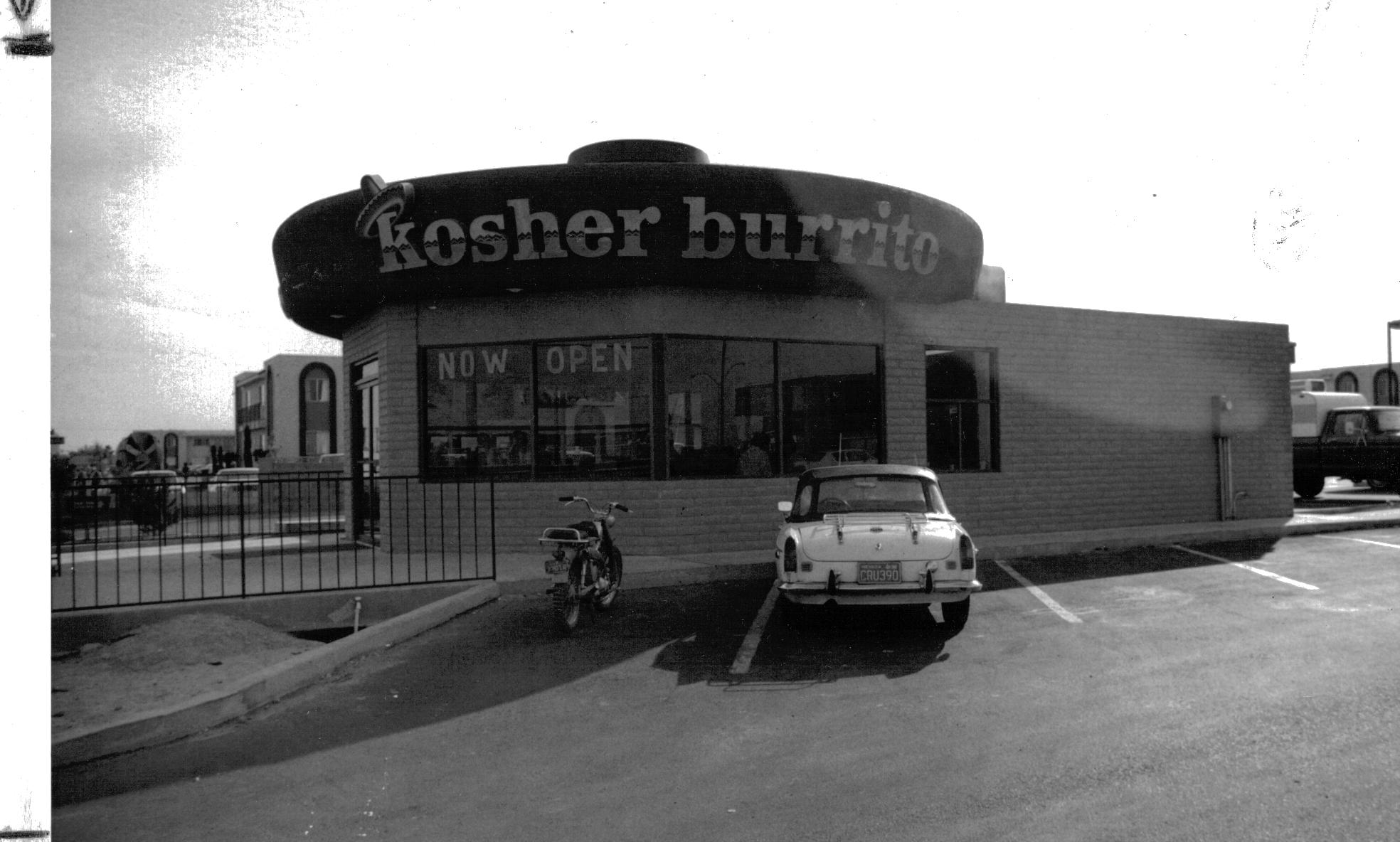
Kosher Burrito, Los Angeles, California (1990)
WEBSITE: To
go to my web site, in which I will update food
&
travel information and help link readers to other first-rate travel
& food sites, click on: home page
ARCHIVE: Readers may now access
an
Archive of all past newsletters--each annotated--dating back to July,
2003, by simply clicking on www.johnmariani.com/archive
SUBSCRIBE AND
UN-SUBSCRIBE: You may subscribe anyone you wish
to this newsletter--free of charge--by
clicking here.
In
This Issue
HOUSTON HIGH AND LOW ON THE HOG by John Mariani
NEW YORK CORNER: Provence by John Mariani
NOTES FROM THE WINE CELLAR: The House of Mondavi reviewed by John Mariani
QUICK BYTES
HOUSTON HIGH AND LOW ON THE HOG
by John Mariani
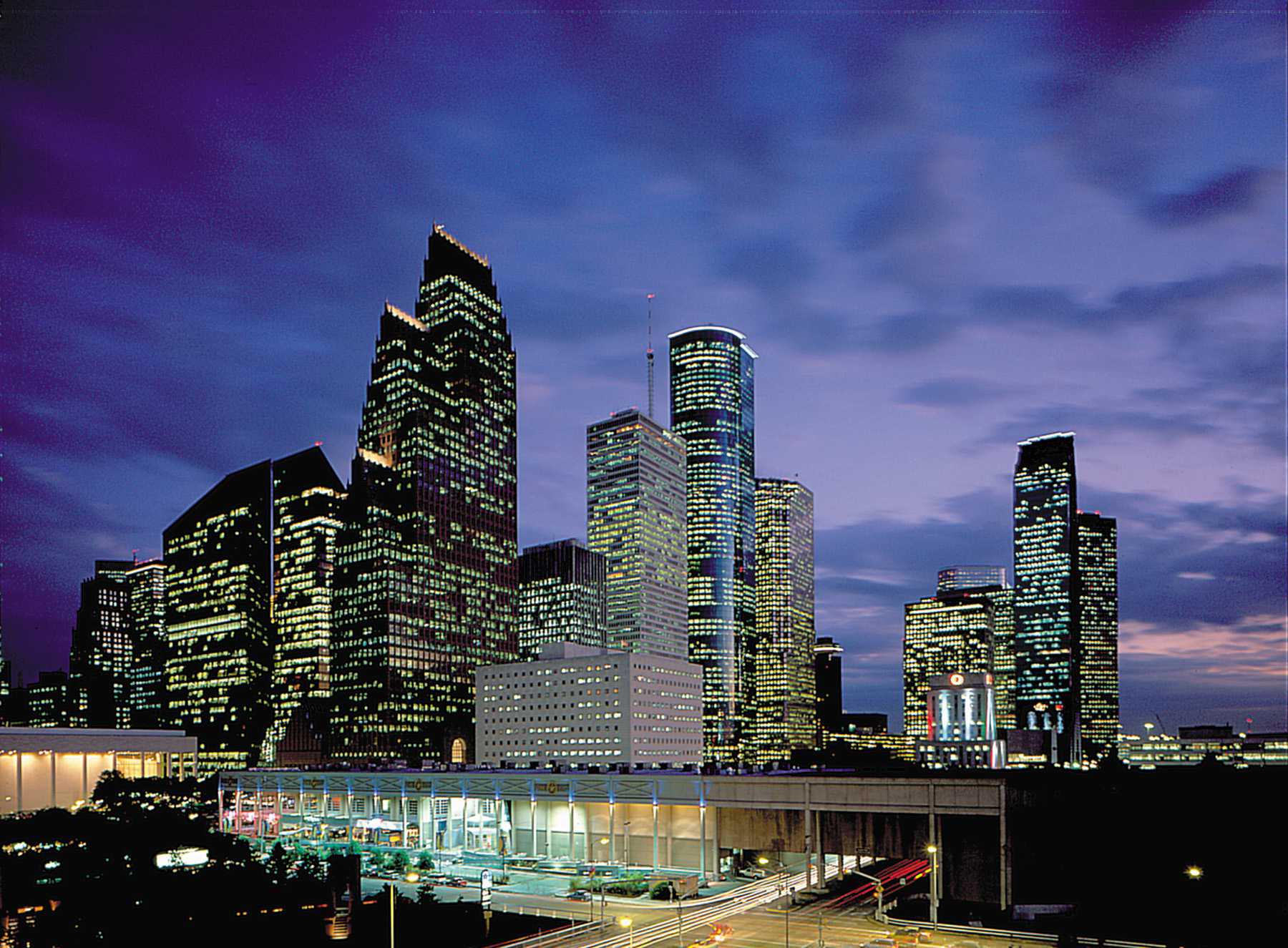 Houston
rarely gets the credit it deserves as a restaurant town.
I've had editors scrunch up their noses when I mention doing a story
about Houston and say, "Whaddaya mean? A story on barbecue?" The
irony is that Houston is not a very good barbecue town, once you get
past Goode Co. Barbecue, and maybe Otto's. And although it does
have plenty of good Mexican restaurants, few, with the exception of
Hugo's, have risen high above the pack or gained much national
attention. And you'd think Houston would have a slew of
indigenous steakhouses, but the city is as inundated as any by the
national chains.
Houston
rarely gets the credit it deserves as a restaurant town.
I've had editors scrunch up their noses when I mention doing a story
about Houston and say, "Whaddaya mean? A story on barbecue?" The
irony is that Houston is not a very good barbecue town, once you get
past Goode Co. Barbecue, and maybe Otto's. And although it does
have plenty of good Mexican restaurants, few, with the exception of
Hugo's, have risen high above the pack or gained much national
attention. And you'd think Houston would have a slew of
indigenous steakhouses, but the city is as inundated as any by the
national chains.What most people don't know is that Houston has a thriving restaurant scene with a growing number of restaurants that rank with the best in the U.S., starting with the third incarnation of Tony's, which owner Tony Vallone keeps at the top. There's also the pioneering Cafe Annie, still as good as when Robert Del Grande it opened in 1981, Américas, which was the first significant Central American restaurant in the U.S., Brennan's of Houston, Mark's, Carmelo's, and Bistro Moderne--all as good as any in the U.S.
So I am always happy to return to this big sprawl of a city and find fine new restaurants and some I've missed that prove to me the breadth and depth Houston has had for more than a decade now. Here are some from a recent trip.
catalan food & wine
5555 Washington
713-426-4260
www.catalanfoodandwine.com
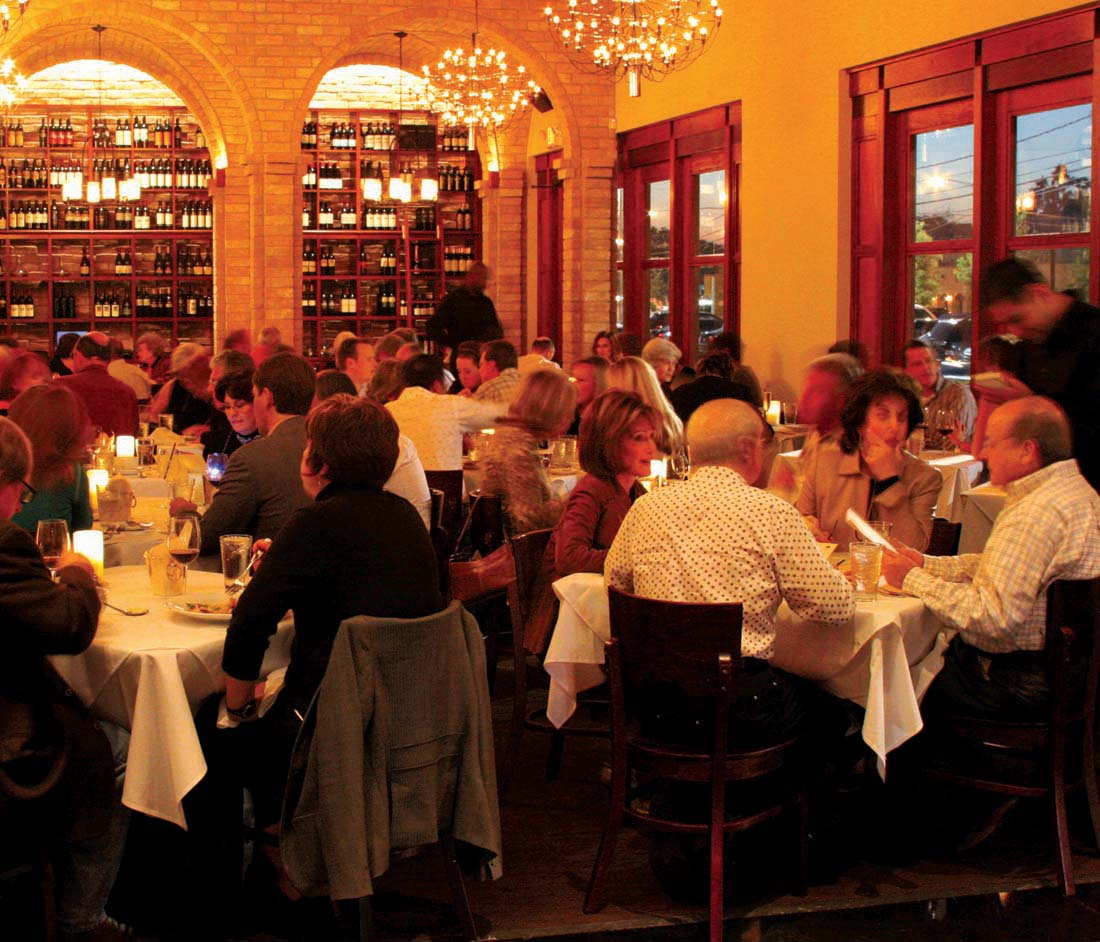 One
of my long-time favorite restaurants in Houston is
Ibiza Food and Wine Bar, owned by Charles Clark and Grant
Cooper, so I was eager to try their new place, Catalan on Washington
Avenue, which is growing into an area with several new
restaurants. Like its predecessor, Catalan is a big place,
seating about 150 in the main dining room and about 40 more on the
patio (which Houstonions seem to favor even when the heat and humidity
would melt a steer's longhorns. There are decorous echoes of
Spain in the brick archways, use of dark woods, and metal chandeliers,
and the admirable use of tablecloths and carpeting to tamp down the
sound in this big space makes Catalan a romantic spot, as well as
a good venue for a business lunch.
One
of my long-time favorite restaurants in Houston is
Ibiza Food and Wine Bar, owned by Charles Clark and Grant
Cooper, so I was eager to try their new place, Catalan on Washington
Avenue, which is growing into an area with several new
restaurants. Like its predecessor, Catalan is a big place,
seating about 150 in the main dining room and about 40 more on the
patio (which Houstonions seem to favor even when the heat and humidity
would melt a steer's longhorns. There are decorous echoes of
Spain in the brick archways, use of dark woods, and metal chandeliers,
and the admirable use of tablecloths and carpeting to tamp down the
sound in this big space makes Catalan a romantic spot, as well as
a good venue for a business lunch.Clark and Cooper have taken on sommelier-managing partner Antonio Gianola, formerly of Da Marco, to maintain an impressive wall of wine, while chef-managing partner Chris Shepherd, formerly at Brennan's of Houston, is overseeing the kitchen. As at Ibiza, the food at Catalan isn't reverentially Spanish, though there are several traditional items here that would qualify, including Catalan garlic soup, gazpacho, and wonderfully spicy chorizo sausage braised in cava sparkling wine.
The food is hearty throughout, starting with crispy pork belly with a gloss of cane syrup, with which you may well want to drink a cava or a Xacoli from the Basque country. There's spicy garlic shrimp, too, and seared tuna with a cool cucumber salad and a red chile-sake vinaigrette that really clicks. At lunch there are also several pressed sandwiches full of juicy braised lamb or brined chicken, and the salads are sumptuously mounted, including one with a seared flat-iron steak, goat's cheese, and almonds in a charred red onion dressing.
The one starter you don't want to miss are the foie gras bons bons with red orange jelly--they burst in the mouth and spoil you for anything else, but treat them as an amusement and push on to excellent charcuterie like rabbit rillette, boudin, and a galantine with bourbon forcemeat and Creole mustard.
One of the best of the main courses is a seared redfish with corn, barley risotto with roasted cipollini vinaigrette, as well as a crepinette of Kobe beef cheek with wilted frisée and a fried duck egg. (I told you this food was very hearty.)
There are some wonderful desserts, including a trio of dark chocolate items, and a good selection of cheese, which goes well with a glass of Port of dessert wine.
Catalan is open for lunch Tues.-Fri., and Sun., and for dinner Wed.-Mon. Dinner "small plates" run $5-$20, main "big plates" $24-$30.
ARTURO'S uptown ITALIANO
1180-1 Uptown Park Boulevard
713-621-1180
www.arturosuptown.com

As with the owners of Catalan, I have long familiarity with those of Arturo's Uptown Italiano, the newest venture of Arturo Boada and Bill Sadler, whose previous combined or separate efforts included the Latino-inflected Beso, La Mer, River Café, Solero, and Café Noche. Here in the burgeoning Uptown Park mall they've gone Tuscan in a handsome, big room (again with patio) with rosewood floors, deep, rich tones of ochre and terracotta, oak chairs, and a sweeping colorful mural above the bar that is always a topic of discussion here.
Chef Boada is not breaking new ground here, staying with traditional regional Italian boundaries, but he does everything with his own form of gusto, even bravado, and the food is rich and intense in flavors, starting with his delicious and decadent baked eggplant parmigiana, which is elsewhere nothing but a flaccid cliché. Here, made carefully, with good ingredients, it's a triumph. So, too, fried calamari are crisp and greaseless; the jumbo lump crab cake fat with good meat; the bruschetta irresistible in its toasty, garlicky bread topped lavishly with a mix of salami, olives, capers, tomatoes, and cheese. The pizza margherita is good if a little too gooey
Pastas come across with the same savory punch, including the now signature Sonia's ravioli, stuffed with chicken and porcini then sauced with a white wine pesto and the lagniappe of lump crabmeat on top--pretty impressive at $8.50 as a starter. Other pastas include sautéed shrimp on fettuccine with a creamy pesto made with cilantro, and--Boada always the master of seafood--fusilli ai frutti di mare teeming with abundant mussels, clams, calamari, and snapper in a lush marinara sauce.
The seafood is best done simply here--the grilled tuna with salsa fresca is terrific--while for meats, go with the grilled beef tenderloin filet with porcini mushroom sauce or the crisply fried chicken alla milanese with lemon caper sauce and marinara. Desserts are big and puffy, Texas style and a tad too sweet.
Arturo’s Uptown Italiano is open for lunch Mon.-Fri, and for dinner Mon.-Sat. Starters run from $6.50-$14.50 and main courses $14.50-$28.50.
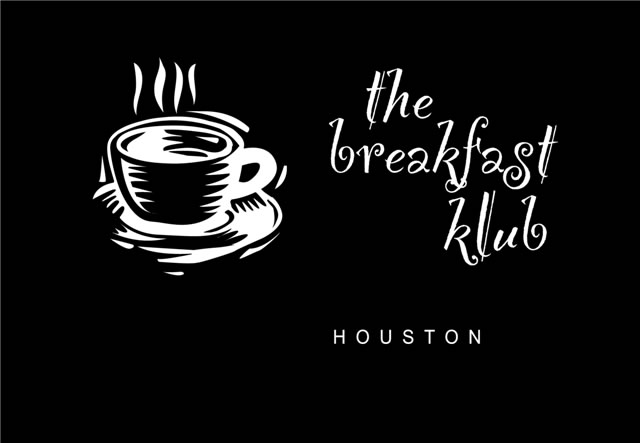
Rarely--maybe never--have I walked into a restaurant and been so swept away by the vibes of the place as at The Breakfast Klub. The line out the door clued me in, for even before getting to the order station everyone was smiling in anticipation. So was I. Staff comes up to you and says good morning and asks how you're doing, social strata are mingled with a gregarious bonhomie, and the aromas of the food make your mouth water.
The Breakfast Klub is something of a phenomenon, as much for its food as for its story. Owner Marcus Davis opened the place with a degree of savvy that began with its location just off the Interstate and the belief that inexpensive, consistently good food of a kind unavailable elsewhere in the city, and a genuine caring for every guest--and you are a guest here--will keep people coming back, as they do from 7 A.M. till closing time at two in the afternoon.
Davis (right) had once been a school teacher, then worked for Chick-Fil before opening The Breakfast Klub five years ago, and now it's become an institution. He's one of those big gentle giants and his personality is obviously infectious
 with his staff, who couldn't be cheerier,
couldn't be better at perking up a sad sack with a cuppa java, and
couldn't cook or serve
with more devotion.
with his staff, who couldn't be cheerier,
couldn't be better at perking up a sad sack with a cuppa java, and
couldn't cook or serve
with more devotion.Ah, yes, the food! It is a breakfast place (Davis says the reason he closes at two PM is so that he can have a life, and he's spurned all offers to duplicate the eatery), and you go here for the biscuits, the catfish, the rice and red beans with pancakes, the pork chop and eggs, and the huge omelets. But everybody knows you come here for the specialty--waffles and chicken wings, a really really terrific dish of perfectly tender, crisp, airy waffles with perfectly crisp, tender, juicy chicken wings. The item is not unique but you almost never see it much anymore. Once upon a time it was a staple of the great Harlem nightclubs. To get to them the swells from downtown Manhattan, as Duke Ellington swingingly told it, took the A train and got off at 125th Street to go to places like The Cotton Club, staying till four in the morning when waffles and fried chicken were served for breakfast.
And here, in a modern version, is the same dish, albeit served from seven in the morning. along with strong coffee--even a special Klub Karamel Macchiato--and a good dose of soul.
The Breakfast Klub is located at 3711 Travis Street; 713-528-8561; www.thebreakfastklub.com
Amici Ristorante
16089 City Walk
Sugar Land, TX
281- 242-2800
www.amicitownsquare.com
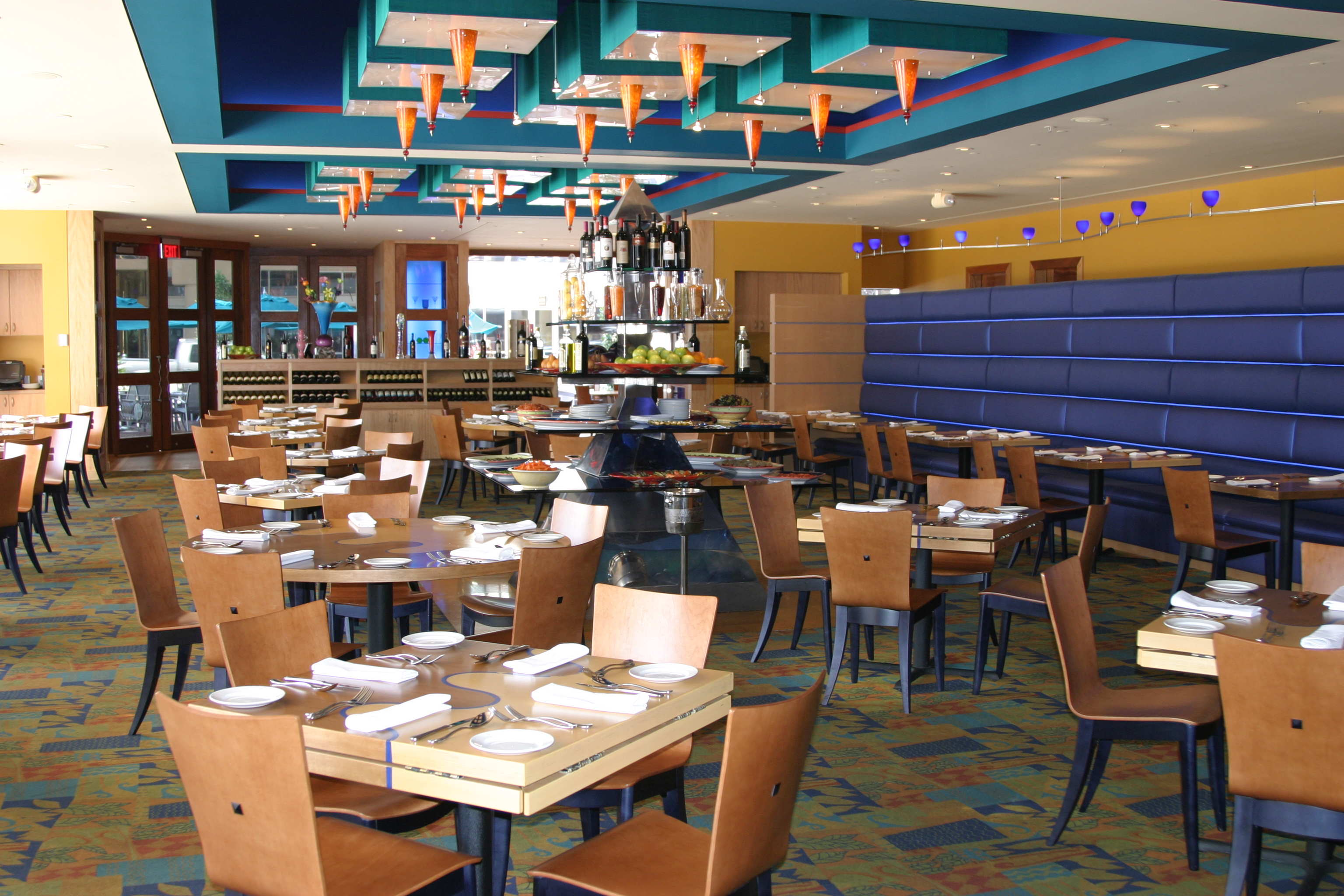 Vallone
has graduated many fine chefs and service personnel from Tony's over
the last three decades, so it was no surprise to learn that Tony's
exec chef Bruce McMillian and Tony's son
Jeff (below), who'd been
running some of his father's other restaurants, and
for more than ten years would go
out on their own. They have combined forces at Amici Ristorante
out in Sugar Land's Town Square upscale shopping center and next to
City Hall, bringing to that section of Texas a far more refined style
of
restaurant than it has ever had before.
Vallone
has graduated many fine chefs and service personnel from Tony's over
the last three decades, so it was no surprise to learn that Tony's
exec chef Bruce McMillian and Tony's son
Jeff (below), who'd been
running some of his father's other restaurants, and
for more than ten years would go
out on their own. They have combined forces at Amici Ristorante
out in Sugar Land's Town Square upscale shopping center and next to
City Hall, bringing to that section of Texas a far more refined style
of
restaurant than it has ever had before.If Sugar Land is unfamiliar to you, you might have seen Steven Spielberg's second commercial movie, "Sugar Land Express," with a very young Goldie Hawn and William Atherton, in 1974, filmed in and around the territory. Named for the sugar plantations established there in the 1850s, the town is now an independent suburb of Houston bisected by I-69.
Amici Ristorante is, first and foremost, large, and it gets very busy many nights of the week with people obviously having a good time, from the bar and lounge through the spaciously set dining room that has reclaimed a Roman frieze that was once at one of Tony Vallone's former restaurants, Anthony's. The modernity of the look is striking for its warmth, with expanses of cherrywood colors and big windows along with an engaging use of blue neon striping against the gray banquettes and cone-shaped ceiling lighting that throws the kind of light that adds gaiety and makes people feel good. The lack of tablecloths casts this as a casual restaurant, and it can get very loud when full. Because of the restaurant's size, the service staff can seem harried, but they perform their ministry with the kind of congeniality I've come to expect from a Vallone operation.
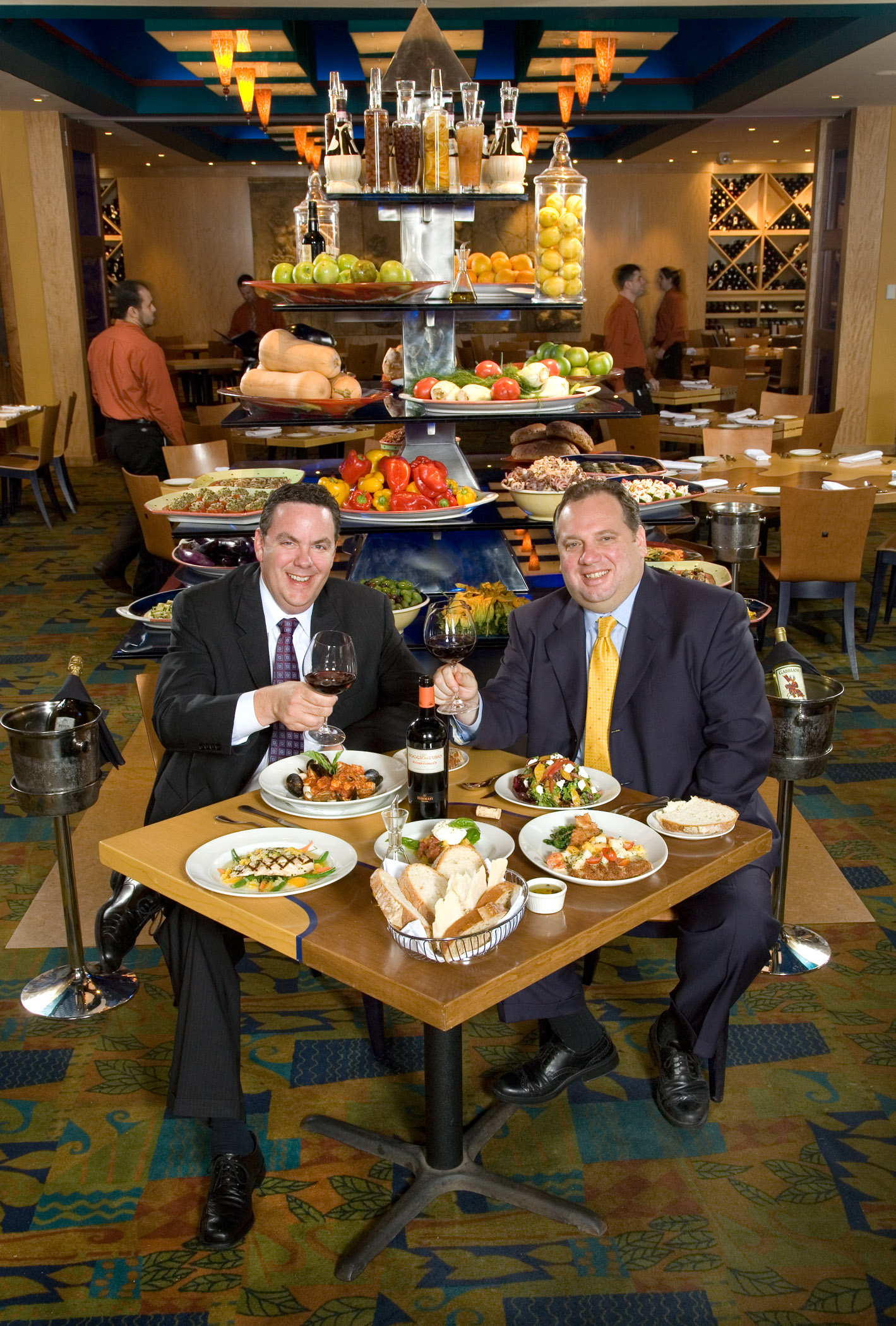 The menu is an amalgam of Italian traditional
cooking with the best Texas and Italian products, so the Prosciutto and
Parmigiano are first rate, and the crab, shrimp, beef and lamb of
exceptional quality. The best way to start off is with a lavish
and very generous plate of antipasti
that includes mozzarella, olives,
salami and sausage, and you may choose a selection of three or five
items from the table. Crab claws are pure Texas Gulf in spirit,
here
done with garlic, crushed red peppers, tomato, and a little Chianti,
while the frutti di mare
selection has clams, mussels, octopus,
calamari and shrimp simply tossed with lemon and oil.
The menu is an amalgam of Italian traditional
cooking with the best Texas and Italian products, so the Prosciutto and
Parmigiano are first rate, and the crab, shrimp, beef and lamb of
exceptional quality. The best way to start off is with a lavish
and very generous plate of antipasti
that includes mozzarella, olives,
salami and sausage, and you may choose a selection of three or five
items from the table. Crab claws are pure Texas Gulf in spirit,
here
done with garlic, crushed red peppers, tomato, and a little Chianti,
while the frutti di mare
selection has clams, mussels, octopus,
calamari and shrimp simply tossed with lemon and oil.Pastas run from the predictable but well made, like linguine with clams, to the more unusual and very good, like the big tubes called paccheri with tomato, shrimp, spinach, and fontina cheese sauced with tomato, garlic and basil. There is a seafood lasagne stuffed with the frutti di mare and treated to a silky cream sauce with basil. White wine laced with lemon is the bath for thin fedelini with Gulf shrimp.
The menu leans more heavily to meats and fowl, probably because there is so much good seafood as appetizers and pastas, so go with romano cheese-coated veal scaloppini layered with Prosciutto and fontina then sauced with a mushroom marsala reduction. A generous lamb shank is braised and comes with a eggplant and tomato risotto with a basil garlic sauce. There are also some "family favorites" that include fettuccine Alfredo, chicken parmigiana, and spaghetti with meatballs.
Dessert may well be an afterthought once you finish your main courses, so go light and order a well-made espresso instead.
Amici's winelist has about two dozen offerings by the glass, and a fine number of California wines along with familiar and unfamiliar Italian bottlings that include most of the Super Tuscans. And there is a marvelous number of wines under $40, which are precisely the kind of wines that go with this kind of Italian food and good feelings.
Amici is open daily for lunch and dinner. Dinner appetizers run $7-$17, full pastas $12-$19, and main courses $17-$26.
NEW YORK CORNER
PROVENCE
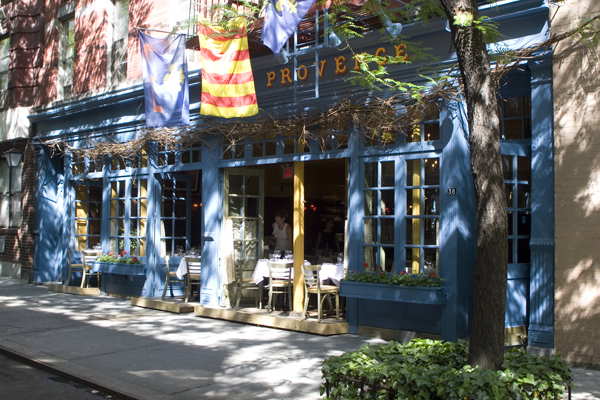
The
still quaint charms of Greenwich Village and SoHo are kept so by a
number of small, often beloved, restaurants whose intimacy and lack of
trendiness are among their greatest appeals to those who want good
food, not too expensive, and a genuinely amiable service staff.
Provence is just such a place, which has been around for many years and
is now under new ownership, Vicki Freeman
and Marc
Meyer, who have done well with their other, well-established
restaurants, Five Points and
Cookshop.
The sun-dappled exterior, with its
lovely windows offering a glance at the passing parade of locals
walking their dogs and tourists with guidebook in hand, is as
Mediterranean blue as ever, but the new owners, with designers
Christopher Hersheimer and Melissa Hamilton, have both spruced up
and warmed up the interior with rich earth colors, blues, and yellows,
lots of flowers, and a refreshing of the garden room to the rear.
A marble oyster bar has been set up, glistening with shellfish on
ice. Red-striped banquettes, sturdy bistro chairs, lace, and
paper-covered tablecloths make this as cheery and inviting as any
restaurant in the neighborhood, though the noise level tends to force
you to ask your tablemate to repeat what he just said. There is
certainly no call for the throbbing music introduced around eight p.m.
Although I would never judge a restaurant staff by
one waitress, I am happy to report that ours that evening could not
have been any more pleasant or knowledgeable, and it makes a difference
in the evening.
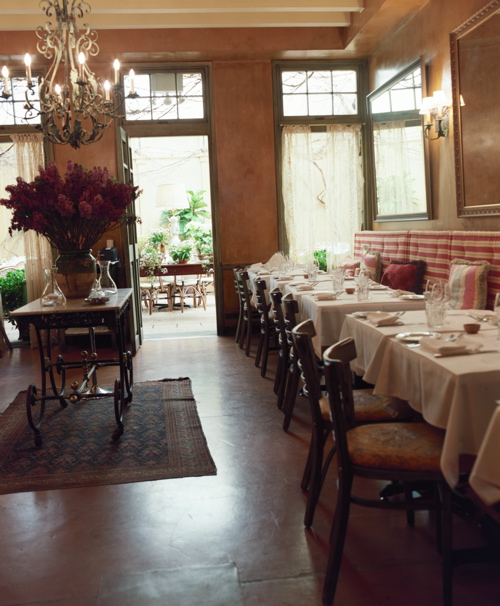 Provence's
menu had for years been dependably traditional, if dated, so the new
owners, together with chef de cuisine Lynn McNeely (below), formerly at Barbuto, have
brought in fresh ideas while maintaining a very close connection to the
kinds of dishes everyone loves and expects from a place with a name
like Provence, including good, creamy brandade
de morue on toast, a nicely chewy hanger steak with frites--though with the addition on
the plate of radicchio, puntarelle
greens, and sauce verte.
Other items are not so familiar and they tend to be among the best,
including a good roasted cauliflower, leek, olive and goat's cheese
gratin and ravioli with braised beef and Parmigiano. A chilled
golden tomato soup with cucumber, red onion, and mint needed more
tomato flavor. Sustainable and organic are the buzzwords that guide the
purchase of ingredients here.
Provence's
menu had for years been dependably traditional, if dated, so the new
owners, together with chef de cuisine Lynn McNeely (below), formerly at Barbuto, have
brought in fresh ideas while maintaining a very close connection to the
kinds of dishes everyone loves and expects from a place with a name
like Provence, including good, creamy brandade
de morue on toast, a nicely chewy hanger steak with frites--though with the addition on
the plate of radicchio, puntarelle
greens, and sauce verte.
Other items are not so familiar and they tend to be among the best,
including a good roasted cauliflower, leek, olive and goat's cheese
gratin and ravioli with braised beef and Parmigiano. A chilled
golden tomato soup with cucumber, red onion, and mint needed more
tomato flavor. Sustainable and organic are the buzzwords that guide the
purchase of ingredients here.
"Label Rouge" rotisserie chicken was excellent,
juicy and flavorful, and well enhanced with rosemary and a sauté
of broccoli di rabe and garlic. Also good in its simple, unassuming way
was a whole fillet of grey sole with a tangy lemon-caper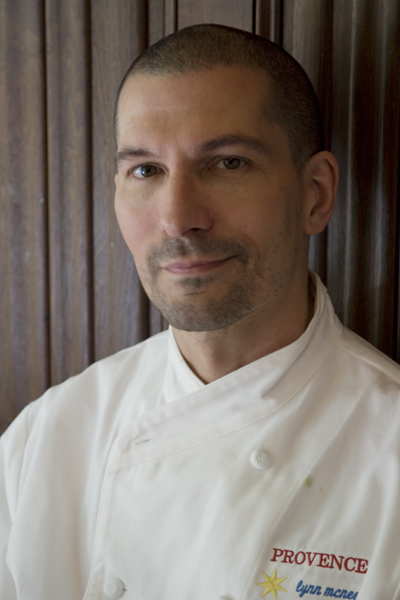 sauce and cucumber salad. Sea
scallops were nice and meaty, sweet with golden tomatoes, olives, basil
and fava beans. Oddly enough, while you'd think that perfect,
crisp frites would be a
no-brainer, the bunch we got that evening were limp and greasy.
sauce and cucumber salad. Sea
scallops were nice and meaty, sweet with golden tomatoes, olives, basil
and fava beans. Oddly enough, while you'd think that perfect,
crisp frites would be a
no-brainer, the bunch we got that evening were limp and greasy.
There is a cheese selection, and they come in peak
condition, like Blue Ledge Farm goat's milk from Vermont and Brebis
sheep's milk from the Pyrenees, but the portion size is teeny, with
much more bread on the side than cheese on the plate. For dessert there
is a delightful chocolate-almond cake, and the rarely seen
Pavlova--actually of Australian origins--made of tender meringue and
sorbet.
The wine list (those by the glass are
printed on the back of the menu), under director Richard Luftig,
is rich in Provençal bottlings like Cinsault, Bandol, and
Chinon, with pretty fair prices.
Provence is as likable as it is
unpretentious, and a real bonhomie buoys the place. I think that
come fall, when richer, bolder flavors enter the menu, Provence will
really settle in on its own style.
NOTES FROM THE WINE CELLAR
Saga of the Mondavi Wine Family Chronicled in New Book
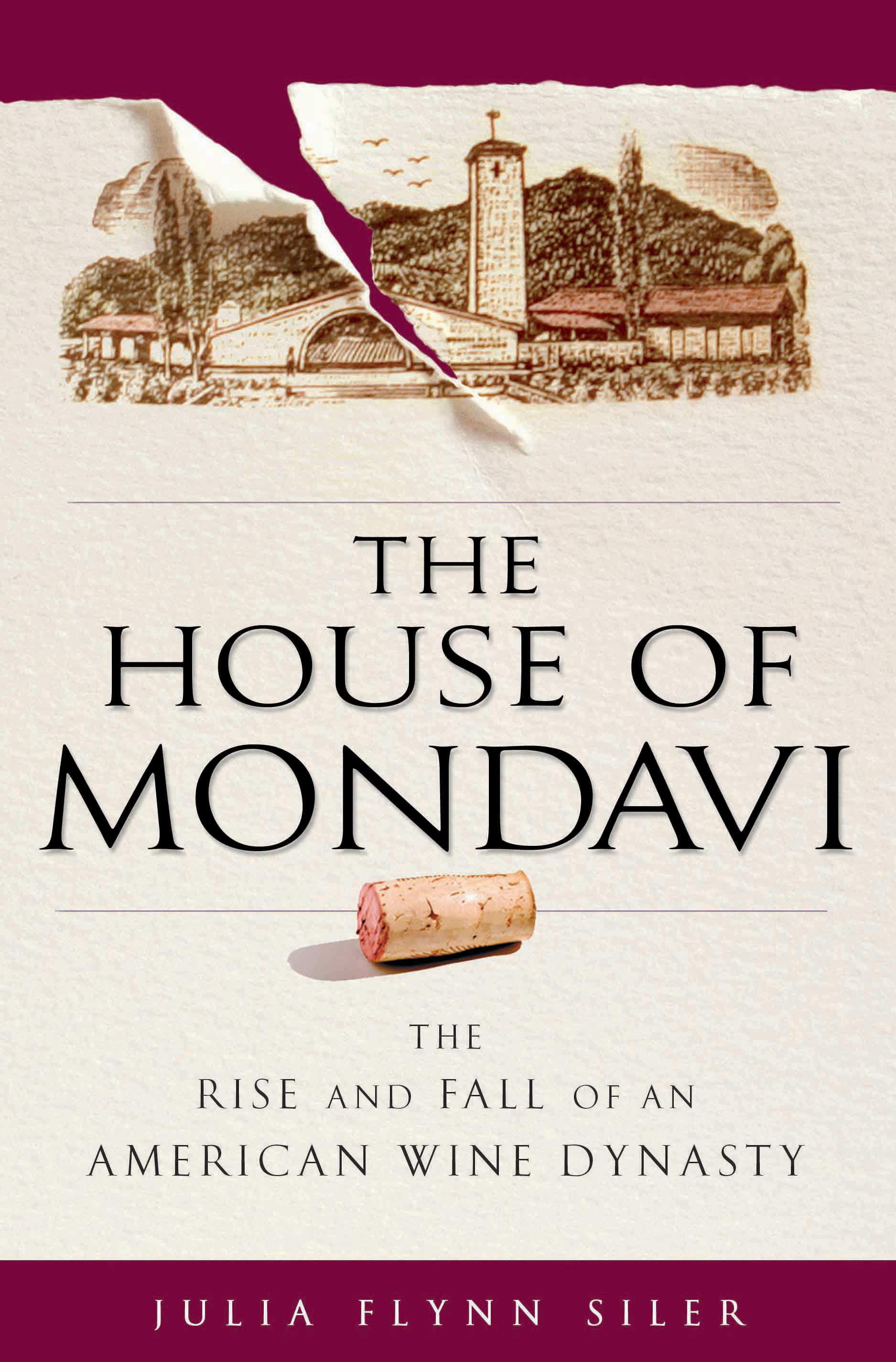 Make
no mistake that the American wine
business is anything but precisely that: A business whose success or
failure
depends just as much on corporate guile as on romantic notions of
sunshine in a
bottle, just like selling shampoo.
Make
no mistake that the American wine
business is anything but precisely that: A business whose success or
failure
depends just as much on corporate guile as on romantic notions of
sunshine in a
bottle, just like selling shampoo.That is the lesson of a new book on
Siler (below), a writer for the Wall Street Journal, has done a tremendous job of research—525 hours of interviews with more than 250 people--in showing how a family farm grew into a multi-million dollar corporation, only to be shredded by rivalries, raging egos, and rampant expansionism, ending in 2004 with Robert Mondavi and his children losing all control and ownership of their namesake winery when Constellation Brands Inc. bought the majority of the stock and forced them out.
The root of the Mondavi problems started early on when two strong-willed Italian immigrants, Cesare and Rosa Mondavi, pitted their sons Robert and Peter against each other to run the Charles Krug winery. Robert, the charismatic dreamer, believed
Robert left to prove his expertise in winemaking and marketing by opening the seminal Robert Mondavi Winery that made California the equal of any wine region in Europe, but in a bitter struggle—which included a fistfight between the brothers--sued his parents and Peter for a share of the family business, which he got after his mother died in the middle of a long, drawn-out trial.
That brings the book only to page 133, and most of what follows is the sorry story of Robert’s own clashes with his sons, Michael, who would become CEO of the Robert Mondavi Corporation, and Timothy, who would tend the vineyards and make wine. Michael, a workaholic marketing mind who wore his hair tied back in what his father called a “rat’s tail” and rode his Harley-Davidson motorcycle with a group called the “RUBS” (rich urban bikers), saw the future of the company in expansion, taking on new wine brands in the medium price category and investing in wineries on five continents.

Robert, in semi-retirement, promised millions of dollars in philanthropy but when Mondavi stocks tanked in the 1990s, he didn’t have the money to make good. Timothy, meanwhile, fought to maintain Mondavi’s eminence as one of the
Siler begins her book with the embarrassment of the Mondavis having their wines auctioned off for low bids at the 2004 Napa Valley Wine Auction, and ends her narrative with the same result at the Auction the following year. In the past Mondavi’s wines took the top bids at these affairs, but now, with their wines’ reputation in limbo, it was the new “cult wines” that were getting the outrageously high bids, which included the most expensive ever in an auction--$500,000 for a single six-liter bottle of 1992 Screaming Eagle Cabernet Sauvignon. That day a unique and historic barrel of 2004 Cabernet co-produced by Robert and Peter, now reunited in their old age, went for only $401,000.
While Siler calls her book—unauthorized but based on interviews with most of the Mondavis—-an “epic tale,” “The House of Mondavi” belies the proverb that behind every great fortune there lies a crime. For although the Mondavis had their share of philandering, expense account padding, nervous breakdowns, and exorbitant spending, they never seem to have been involved in anything nefarious, so that the reader is left with hundreds of pages of management infighting, suits and countersuits, and, the Byzantine inner workings of corporate gyres.
Which in the end, Mondavi, like most of the wine business in California and elsewhere, had become. Towards the end Siler writes that Margrit Mondavi, Robert’s wife, reacted to the family’s loss by noting how little others “understood what motivated her husband, which was never money, and ruing that the family had ever left matters had ever left matters to people who operated more like calculating machines than passionate human beings.”

DUDE!
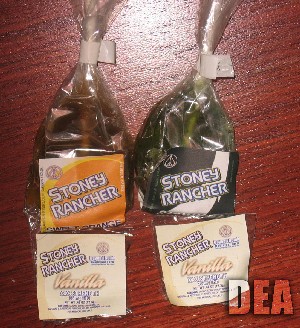
In
QUICK BYTES
* In
* From now until Labor Day, The Palm Terrace in Newport Beach, CA, at will feature fun, and surf and turf delights on
* Adobo Grill will host two tequila dinners at each of its
* From July 20-22 in Watkins Glen, NY, The Finger Lakes Wine Festival, supported by The Corning Museum of Glass, will host 7
* On July 28 a Vintner's Dinner with Brice Jones of Emeritus wines will be held at Chillingsworth in
* On Aug. 1 more than 40 Miami chefs join George Fistrovich from The Ritz-Carlton, Key Biscayne and Allen Susser of Chef Allen's at “Share Our Strength's 20th annual Taste of the Nation Miami” to raise money for the fight against childhood hunger in America. The benefit begins with a VIP champagne reception and Iron Bartender competition, followed by culinary tastings, wines from around the globe, a silent and live auction and live music at
* On Aug 4 & 5, top chefs representing 20 American states will gather in New Orleans to compete in the 2007 Great American Seafood Cook-Off, presented by the Louisiana Seafood Promotion and Marketing Board.
Everett Potter's Travel Report:
Tennis Resorts Online: A Critical Guide to the World's Best Tennis Resorts and Tennis Camps, published by ROGER COX, who has spent more than two decades writing about tennis travel, including a 17-year stretch for Tennis magazine. He has also written for Arthur Frommer's Budget Travel, New York Magazine, Travel & Leisure, Esquire, Money, USTA Magazine, Men's Journal, and The Robb Report. He has authored two books-The World's Best Tennis Vacations (Stephen Greene Press/Viking Penguin, 1990) and The Best Places to Stay in the Rockies (Houghton Mifflin, 1992 & 1994), and the Melbourne (Australia) chapter to the Wall Street Journal Business Guide to Cities of the Pacific Rim (Fodor's Travel Guides, 1991). Click on the logo below to go to the site.
~~~~~~~~~~~~~~~~~~~~~~~~~~~~~~~~~~~~~~~~~~~~~~~~~~~~~~~~~~~~~~~~~~~~~~~~~
MARIANI'S VIRTUAL GOURMET NEWSLETTER is published weekly. Editor/Publisher:
John Mariani. Contributing Writers: Robert Mariani, Naomi
Kooker, Kirsten Skogerson, Edward Brivio, Mort
Hochstein, Suzanne Wright. Contributing
Photographers: Galina Stepanoff-Dargery, Bobby Pirillo. Technical
Advisor: Gerry McLoughlin.
Any of John Mariani's books below
may be ordered from amazon.com by clicking on the cover image.
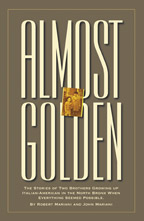 My
newest book, written with my brother Robert Mariani, is a memoir of our
years growing up in the My
newest book, written with my brother Robert Mariani, is a memoir of our
years growing up in the For those of you who don't think of the Robert and I think you'll enjoy this very personal look at our --John Mariani |
 |
 |
 |
 |
 |
 |
copyright John Mariani 2007

